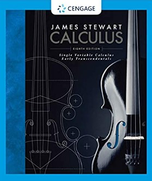In Section 4.8 we considered Newtons method for approximating a root r of the equation
Chapter 11, Problem 39(choose chapter or problem)
In Section 4.8 we considered Newtons method for approximating a root r of the equation fsxd 0, and from an initial approximation x1 we obtained successive approximations x2, x3, . . . , where xn11 xn 2 fsxnd f9sxnd Use Taylors Inequality with n 1, a xn, and x r to show that if f 0sxd exists on an interval I containing r, xn, and xn11, and | f 0sxd | < M, | f9sxd | > K for all x [ I, then | xn11 2 r| < M 2K | xn 2 r| 2 [This means that if xn is accurate to d decimal places, then xn11 is accurate to about 2d decimal places. More precisely, if the error at stage n is at most 102m, then the error at stage n 1 1 is at most sMy2Kd1022m.]
Unfortunately, we don't have that question answered yet. But you can get it answered in just 5 hours by Logging in or Becoming a subscriber.
Becoming a subscriber
Or look for another answer
